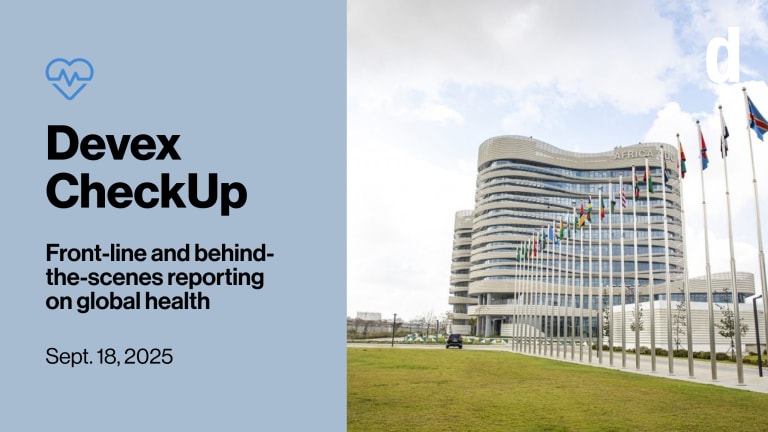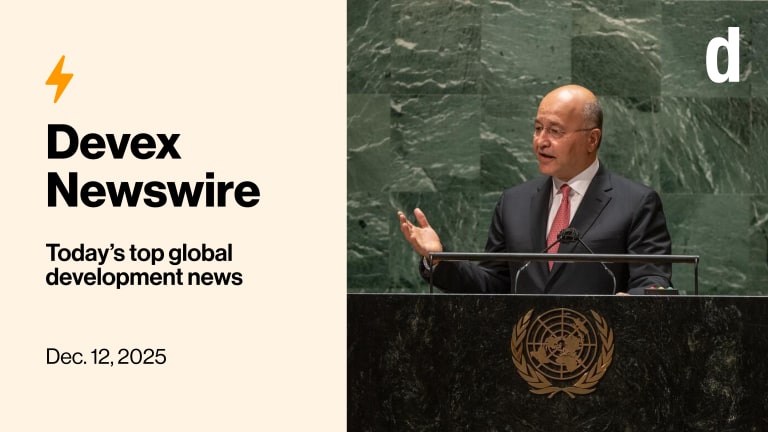
BOGOTÁ, Colombia — At the end of 2018, the International Committee of the Red Cross in Colombia began putting a major emphasis on disseminating information for people planning to leave Venezuela for Colombia, to avoid some of the problems experienced during the journey.
There are currently over 1.2 million Venezuelans living in Colombia, with many having left their country because of insecurity, poor economic conditions, and a lack of essential services.
But many Venezuelans encountered problems on their way out of the country. According to CEPAZ — a nonprofit organization promoting and defending the democratic values, human rights, and peace in Venezuela — 37% of displaced Venezuelan women have experienced some form of violence. Médecins Sans Frontières reports that it has provided nearly 1,000 Venezuelans in Colombia with mental health services to address anxiety and depression. Aid organizations also report that those seeking asylum often experience malnutrition and other health issues on the road with limited access to care.
To help prevent some of those problems on the road, ICRC decided to share information with Venezuelans traveling into Colombia — a nation plagued by armed conflict and difficult terrain. The information ranges from tips on the safest routes to travel, warnings against traveling alone, to weather updates and information on where to go for help.
"Preventive information from the start of their journey ... could actually simplify the whole process of migrating through a country like Colombia."
— Audrey Purcell-O’Dwyer, deputy protection coordinator, ICRC“Information is key; information received by the beneficiaries and information given to the beneficiaries,” said Audrey Purcell-O’Dwyer, ICRC’s deputy protection coordinator in charge of the re-establishing family links program in Colombia, who described information as a form of aid.
While in places such as Syria and Afghanistan, ICRC has been conducting similar activities for a number of years, this is the first time ICRC Colombia has focussed so heavily on information dissemination. It bases the messaging — distributed via leaflets, posters, social media, and word of mouth — on the experiences of people from these vulnerable communities who have previously made the journey.
Purcell-O’Dwyer spoke with Devex to explain more about information as a form of aid.
This conversation has been edited for length and clarity.
Can you explain the link between having access to more information about the migration routes and development issues such as health?
If they [Venezuelans] knew that certain areas were to be avoided geographically in Colombia, it would change the path they’d take to get to their final destination. Then, we could prevent cases of harassment, of sexual violence, etc.
But the messages have to be passed not only in Colombia, but in Venezuela. For example, many migrants still take irregular routes instead of passing actual checkpoints because they're convinced that they’ll be arrested if they don't have identification that allows them to go into Colombia. But that’s no longer the case. You have somebody from Migration Colombia giving orientation to the migrants and telling them how to get a document so they can move freely in the country. That would avoid people taking what we call "trochas," where you have problems of armed groups, people that rob other people, and people disappearing.
Preventive information from the start of their journey — using social media so people can contact us within a preventive window and ask “what should I do, what should I take, how should I go about it” — could actually simplify the whole process of migrating through a country like Colombia, where unfortunately you still have active conflict and armed groups.
Since ramping up your information dissemination activities across the migrant population in the region, what lessons have you learned?
The organization has to adapt to changes. The first part of the migration was a different population than the one then we are seeing right now. For example, we know that the ones who are migrating now are women and children so our messages have to adapt, taking into account that this population will be much more vulnerable than the one we saw before.
Also working with other partners — like UNHCR and our national society, the Colombian Red Cross — is very important because we know we can't do this alone. We have other good partners to help disseminate this information.
What do the 61 connectivity points run by yourselves and partners do?
On the road, there are different connectivity points so they can call their family and this helps to avoid disappearances or separation. Unfortunately, many of the people that reach the connectivity points have already lost a family member or left them behind and have no means of contacting them.
Our implementing partners, the Red Cross volunteers, proactively ask people if they’ve lost somebody or lost contact with their family back in Venezuela. If they say yes, we can take tracing requests — a document that takes basic information about the person we're looking for — and we go actively looking for that person and when we find them we reestablish contact between the family members.
The first idea of connectivity points is preventive; trying to avoid people losing contact with their family members. The second idea is protective action through the remission of cases to the ICRC by our implementing partners.
We put posters and leaflets where our implementing partners are. On one side, it's preventive actions, so it might say “please print a copy of your documents before you go,” “please communicate with your family as you're on the road.” On the other side, there’s a protection side, which explains what to do if you’ve lost a family member or are looking for somebody.
The connectivity points are part of a regional strategy, so we have connectivity points in Brazil, Ecuador, Peru, Venezuela, and Colombia. We try to have a regional approach in terms of re-establishing family links because it's the same beneficiaries and target audience on the move.
What advice would you give to other organizations when it comes to “information as aid” and how to go about distributing it?
To understand what type of action you should be doing as a humanitarian organization, you need to sit down with your target audience and understand what their actual needs are. If you don't do that, then you're not doing your job properly.
The second thing is be updated because we’re in a context that's constantly changing and evolving. Two months ago, it was Peru putting in new legislation to cross the border and now it's Ecuador. Who knows, maybe in a month Colombia will change its procedures. The information that we share with people needs to be accurate, intelligent, short, impactful and visual. It's a hard job for every organization or institution that works on migration.
In terms of connectivity, it's crazy how something so simple as a phone call can bring so much well-being to a person.








